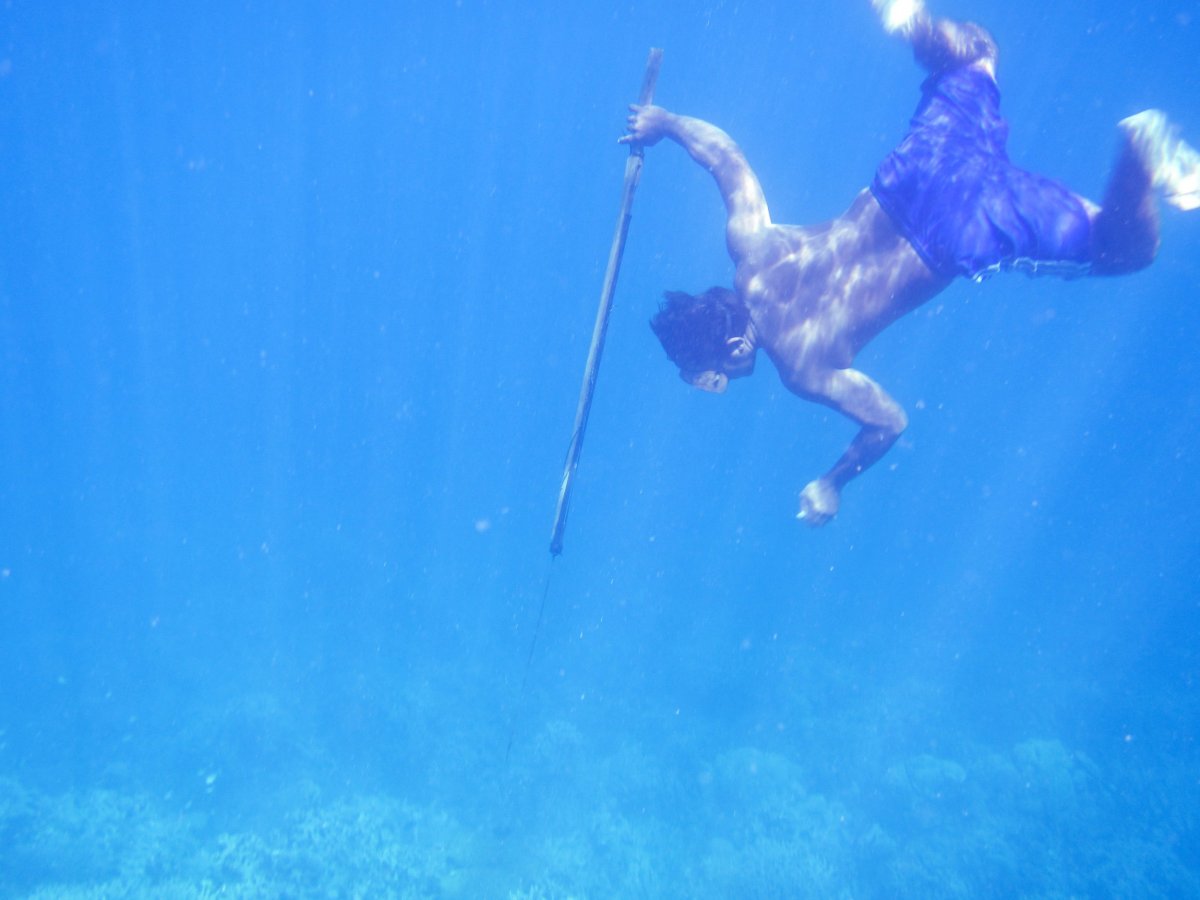How long can you hold your breath underwater? Thirty seconds? A few minutes? It's said the average person can last about two minutes before they come spluttering back up for air.
The freediving Bajau people of Southeast Asia, however, are not your average people. Scientists have discovered the group of "sea nomads" may have developed genetic adaptations that allow them to free dive to depths of up to 230 ft. Bajau members report lasting up to thirteen minutes underwater in a single dive. This incredible skill, the researchers think, could be down to their swollen spleens. The research was published Thursday in the journal Cell.

For more than 1,000 years the Bajau have lived off of the seas in Southeast Asia. Now, they collect food deep in the waters around Indonesia with just a set of weights, a pair of wooden goggles and a spear.
Researcher Melissa Ilardo from the University of Copenhagen travelled to Jaya Bakti, Indonesia, to try and work out exactly how the Bajau people had developed their skills. She suspected it had something to do with the spleen, a weird organ that piggybacks on the side of the stomach. The spleen is a key part of the human diving response: various mechanisms that kick into action when the body is submerged in cold water. The heart slows, the blood vessels shrink and the spleen contracts—all to help the body survive oxygen deprivation.
"There's not a lot of information out there about human spleens in terms of physiology and genetics," Ilardo said in an emailed statement, "but we know that deep diving seals, like the Weddell seal, have disproportionately large spleens. I thought that if selection acted on the seals to give them larger spleens, it could potentially do the same in humans."
Ilardo performed ultrasound scans on members of the Bajau group and collected genetic samples. She also tested members of the neigboroung Saluan people who live on land. The spleens of the Bajau, her research team discovered, were on average 50 percent larger than those of the Saluan. Even non-diving Bajau people had enlarged spleens, showing this wasn't just an acquired response to diving, but something deeper.

Genetic analysis found a gene called PDE10A hiding in the Bajau people's samples. PDE10A is believed to control levels of thyroid hormone T4. "It's been shown in mice that thyroid hormones and spleen size are connected," Ilardo explained. "If you genetically alter mice to have an absence of the thyroid hormone T4, their spleen size is drastically reduced, but this effect is actually reversible with an injection of T4."
Genetic adaptions to diving have never been tracked in humans before, she added. The results could have implications for scientist's approach to acute hypoxia—a sudden depletion of oxygen from the body's tissue—explained Ilardo's academic supervisor Rasmus Nielsen of the University of Copenhagen and the University of California, Berkeley, in the statement. "It's a hypoxia experiment that nature has made for us and allows us to study humans in a way that we can't in a laboratory."
"This study is a wonderful example of the value of studying these small populations living under extreme conditions," added Eske Willerslev, Ilardo's other supervisor and a professor at the University of Copenhagen and the Univeristy of Cambridge. "A lot of them are threatened and this is not just a loss culturally and linguistically, but for genetics, medicine, and sciences in general. There's still a lot of information to be gathered from these understudied populations."
Uncommon Knowledge
Newsweek is committed to challenging conventional wisdom and finding connections in the search for common ground.
Newsweek is committed to challenging conventional wisdom and finding connections in the search for common ground.
About the writer
Katherine Hignett is a reporter based in London. She currently covers current affairs, health and science. Prior to joining Newsweek ... Read more
To read how Newsweek uses AI as a newsroom tool, Click here.








